Revolutionary Power of Advancements in Dual Gradient Drilling in Offshore Oil and Gas Exploration
Dual Gradient Drilling (DGD) is a revolutionary method in offshore oil and gas exploration. This novel drilling technique is a substantial departure from traditional approaches, with various benefits in terms of safety, efficiency, and cost-effectiveness. In recent years, developments in dual gradient drilling have strengthened its position as a revolutionary power in the oil and gas business.
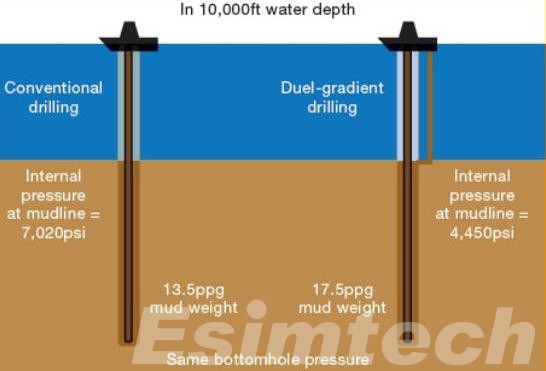
Understanding Dual Gradient Drilling
Dual Gradient Drilling is the simultaneous use of two different types of drilling fluids in a wellbore, one in the annular space and the other in the drill string.
| Aspect | Description |
| Objective | Enhanced Well Control: Improve control over wellbore pressure and stability during drilling operations. |
| Components | Low-Density Fluid (LD): Positioned above the reservoir section. Provides buoyancy and reduces equivalent mud weight. High-Density Fluid (HD): Positioned below the reservoir section. Counteracts pressure from the formation. |
| Advantages | Improved Well Control: Minimizes the risk of kicks and blowouts.Enhanced Drilling Efficiency: Optimizes drilling performance in challenging formations. Reduced Mud Weight: Enables drilling in narrow pressure windows without compromising stability. |
| Challenges | Equipment Complexity: Requires specialized equipment to handle dual fluid systems.Fluid Compatibility: Ensuring compatibility and stability of both fluids throughout the drilling process. |
| Applications | Deepwater Drilling: Mitigates wellbore stability challenges in deepwater environments.Complex Reservoirs: Addresses challenges in formations with varying pressure regimes. |
| Industry Impact | Safety: Reduces the risk of well control incidents. Exploration Expansion: Enables drilling in previously challenging environments, expanding exploration possibilities. |
| Future Trends | Technological Advancements: Continued development of equipment and fluids for more efficient dual gradient drilling. Increased Adoption: Growing acceptance and utilization of dual gradient drilling as industry experience and technology improve. |
| Key Players | Oil and Gas Operators: Leading exploration and production companies driving innovation.Technology Providers: Companies specializing in developing equipment and fluids for dual gradient drilling. |
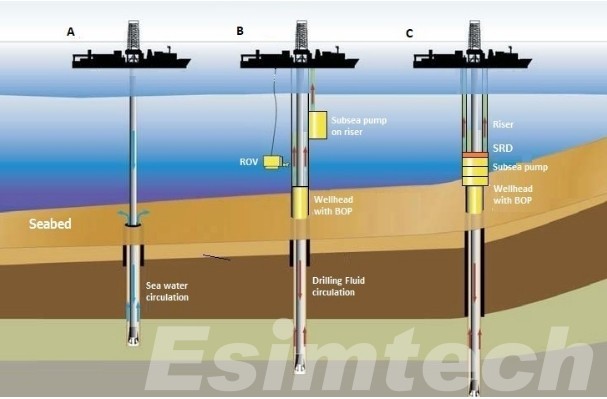
Notable Advancements in Dual Gradient Drilling
1. Managed Pressure Drilling Integration
Recent improvements have included the combination of Dual Gradient Drilling and Managed Pressure Drilling (MPD) techniques. MPD requires precise control over wellbore pressure, allowing drilling in small pressure windows. Combining DGD with MPD enhances the overall drilling process by providing better control over wellbore conditions, reducing the risk of kicks and blowouts.
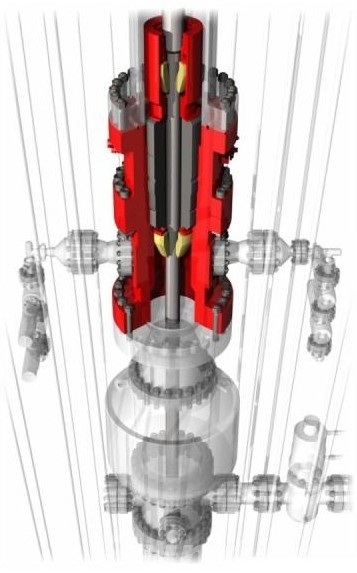
2. Real-time Monitoring and Automation
Modern Dual Gradient Drilling systems include modern sensors and monitoring tools that enable real-time surveillance of wellbore conditions. Automated systems can quickly modify drilling parameters in response to changing subsurface conditions. This not only improves operational efficiency but also increases safety by reducing the likelihood of unexpected pressure swings.
3. Improved Riser Systems
Riser systems are critical to DGD operations, and recent improvements have focused on developing more durable and reliable riser systems. Improved materials, connecting methods, and stress analysis have resulted in riser systems that can resist the extreme conditions encountered during deepwater drilling.
4. Deepwater and Ultra-Deepwater Applications
Dual Gradient Drilling has proven particularly useful in deepwater and ultra-deepwater exploration, where the problems of high pressure and high temperature are more pronounced. The technology allows for more efficient drilling in these challenging environments, unlocking new reserves and expanding the frontier of offshore exploration.

5. Environmental Considerations
Advancements in DGD technology also address environmental concerns associated with drilling operations. By maintaining precise control over wellbore pressures, the risk of oil spills and other environmental incidents is significantly reduced. This aligns with the industry’s increasing focus on sustainable and responsible drilling practices.
6. Enhanced Downhole Tools and Equipment
The tools and equipment used in DGD operations have seen substantial improvements. Downhole pressure and temperature sensors are now more accurate and reliable, providing real-time data to drilling engineers. Advanced downhole valves and chokes enable precise control over fluid density and pressure, contributing to a safer and more controlled drilling environment.
7. Research and Development Initiatives
Ongoing research and development initiatives continue to push the boundaries of DGD technology. Collaborations between industry players, research institutions, and technology providers aim to address remaining challenges and unlock further potential in dual gradient drilling, ensuring its continued evolution.
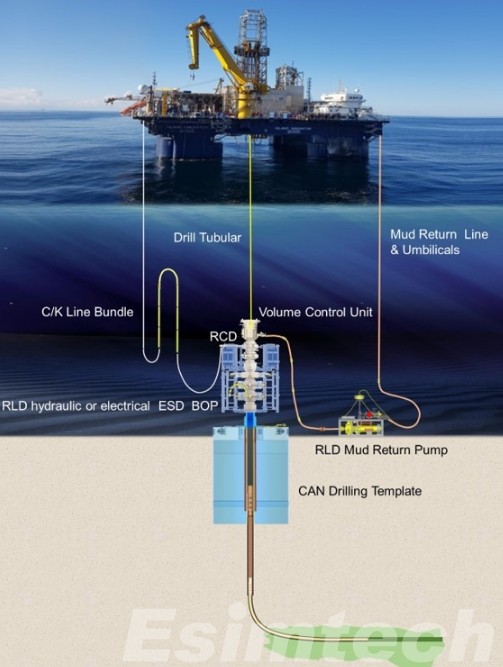
How Simulation Technology Used in Dual Gradient Drilling
Simulation technology is critical during the planning, design, and execution stages of Dual Gradient Drilling (DGD) operations. The complexity of drilling processes, particularly in harsh offshore locations, needs precise modeling and analysis to improve performance and assure safety.
1. Hydraulic Simulations
Hydraulic simulations are used to model the movement of drilling fluids inside the well bore. This comprises both the annular space and the drill string. Simulation tools aid in estimating pressure differentials, fluid velocities, and temperature changes under a variety of drilling scenarios. Engineers can enhance drilling efficiency by precisely simulating hydraulic action and optimizing mud characteristics.
2. Wellbore Stability Modeling
Wellbore stability is assessed using simulation techniques, which predict probable concerns such as borehole collapse, mud loss, and trapped pipe occurrences. These models take into account geological formations, rock mechanics, and drilling fluid interactions. Engineers can adjust drilling parameters based on simulations to mitigate stability challenges and minimize risks during the drilling process.
3. Dynamic Modeling of Dual Gradient Systems
Simulation technology enables the dynamic modeling of the dual gradient system, considering the interaction between the fluids in the annulus and drill string. This helps in understanding how changes in drilling parameters, such as fluid density or flow rates, affect wellbore pressures in real time. Dynamic simulations contribute to better decision-making during the drilling operation.
4. Risk Analysis and Contingency Planning
Simulations are used for risk analysis to identify potential challenges and failure scenarios. By running simulations with varying parameters, operators can assess the likelihood of kicks, blowouts, or other unforeseen events. This information is crucial for developing contingency plans and emergency response strategies, enhancing overall safety.
5. Training and Scenario Simulations
Simulation technology is used to teach drilling teams. Virtual drilling training simulators generate realistic situations in which drillers can practice responding to various downhole circumstances and crises in a controlled setting. This improves the drilling team’s skill set and prepares them for potential obstacles during DGD operations.
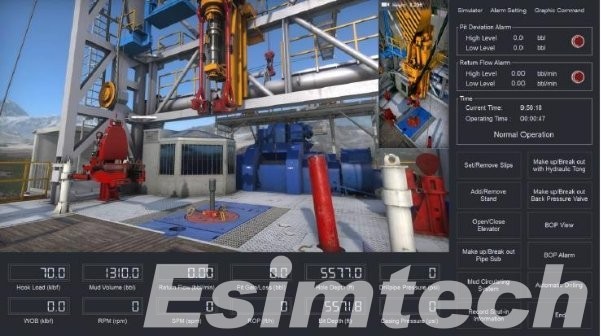
6. Real-time Monitoring and Control Simulations
Some advanced drilling and well control simulation systems allow for real-time monitoring and control of drilling operations. By integrating with sensor data from the rig, simulations can continuously update and adjust drilling parameters. This real-time simulation capability enhances the ability to respond quickly to changing downhole conditions and maintain optimal wellbore control.
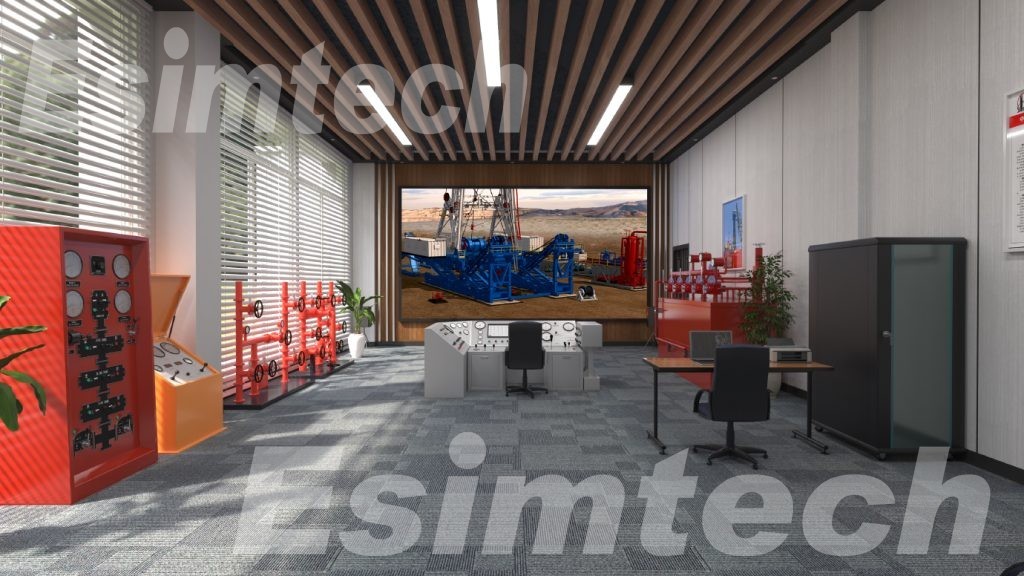
7. Environmental Impact Assessment
Simulation technology is also utilized to evaluate the environmental impact of drilling activities. Operators can reduce environmental effects and comply with requirements by modeling drilling fluid dispersion and predicting potential environmental implications.
Conclusion
The continuous advancements in the Dual Gradient Drilling technique represent a paradigm shift in offshore oil and gas exploration. Simulation technology in Dual Gradient Drilling is used for a variety of purposes, including drilling parameter optimization, training, and real-time monitoring.
As the industry embraces these developments, Dual Gradient Drilling is positioned to play a critical role in the future of offshore drilling, opening up new avenues for exploration in difficult and previously unreachable places.

